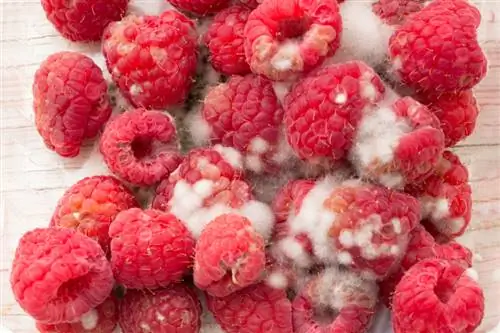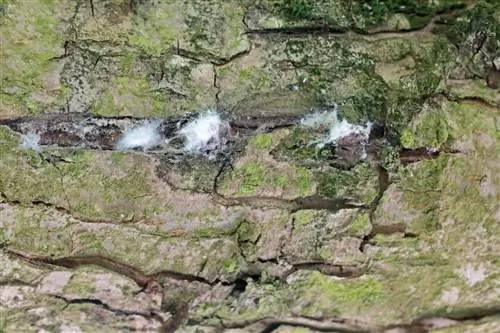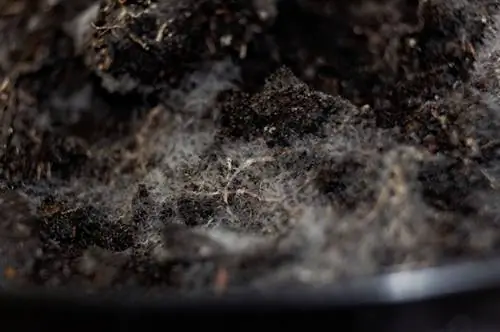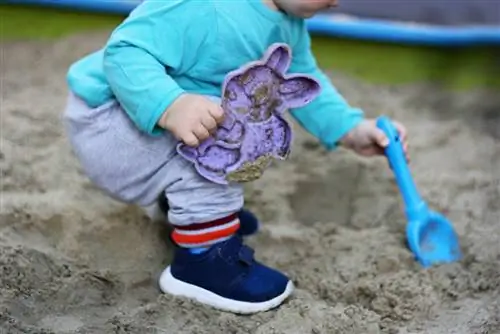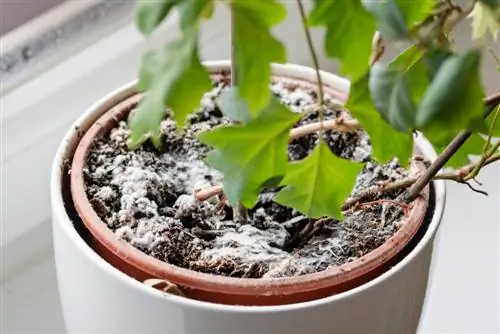- Author admin [email protected].
- Public 2023-12-16 16:46.
- Last modified 2025-01-23 11:19.
Mouldy raspberries on the bushes are not only unsightly, the mold is also harmful to he alth. What promotes mold growth and how you can prevent it.
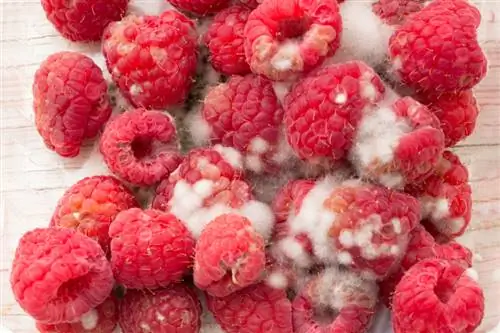
How do you prevent mold on raspberries?
To prevent mold on raspberries, raspberry bushes should be planted in an airy, sunny location, thinned out and only watered from below in the morning. Remove fruit mummies and dispose of moldy plant parts in household waste.
Blue mold on raspberries
You can find moldy raspberries hanging between he althy fruits on almost every raspberry bush. This is blue mold. It is favored by moisture.
If many raspberry fruits are affected, this is a sign that the location of the plants is unfavorable. Most of the time they are in the shade, get little light and are watered incorrectly.
Prevention of mold infestation on raspberries
- Choose an airy location
- Thinning raspberry bushes
- Only water from below in the morning
- Removing fruit mummies
- Dispose of moldy fruit in the trash can
The right location
Mold spreads quickly, especially when it is wet. Therefore, make sure that the plants can always dry well after rain showers.
Plant raspberry plants in a light location where they get lots of sun.
Many raspberries are too close together so that the air cannot circulate well. Maintain an optimal planting distance and leave a maximum of 15 canes per perennial.
Protect raspberries from too much moisture
Always water the raspberries from the bottom. Avoid wetting the leaves and flowers. Automatic sprinkler systems should be set to moisten only the ground.
The best time to water is early morning. Then the plants get enough sun throughout the day so that damp parts of the plant can dry out. Watering in the evening promotes mold formation.
Dispose of affected plant parts
If the raspberry has severe mold growth, you should no longer store cut leaves and shoots in the garden. Put them in the trash to prevent further spread.
Remove all fruit mummies from the bushes. These are small, dried fruits that hang between the he althy raspberries.
Fruit mummies are often contaminated with mold spores. They are distributed among the he althy fruits if the dried raspberries are not picked.
Tips & Tricks
You should never eat moldy raspberries. Throw them in trash cans. You can use fruit that grew next to a moldy raspberry if you don't notice even the slightest spot of mold. In this case, wash the fruit well.

